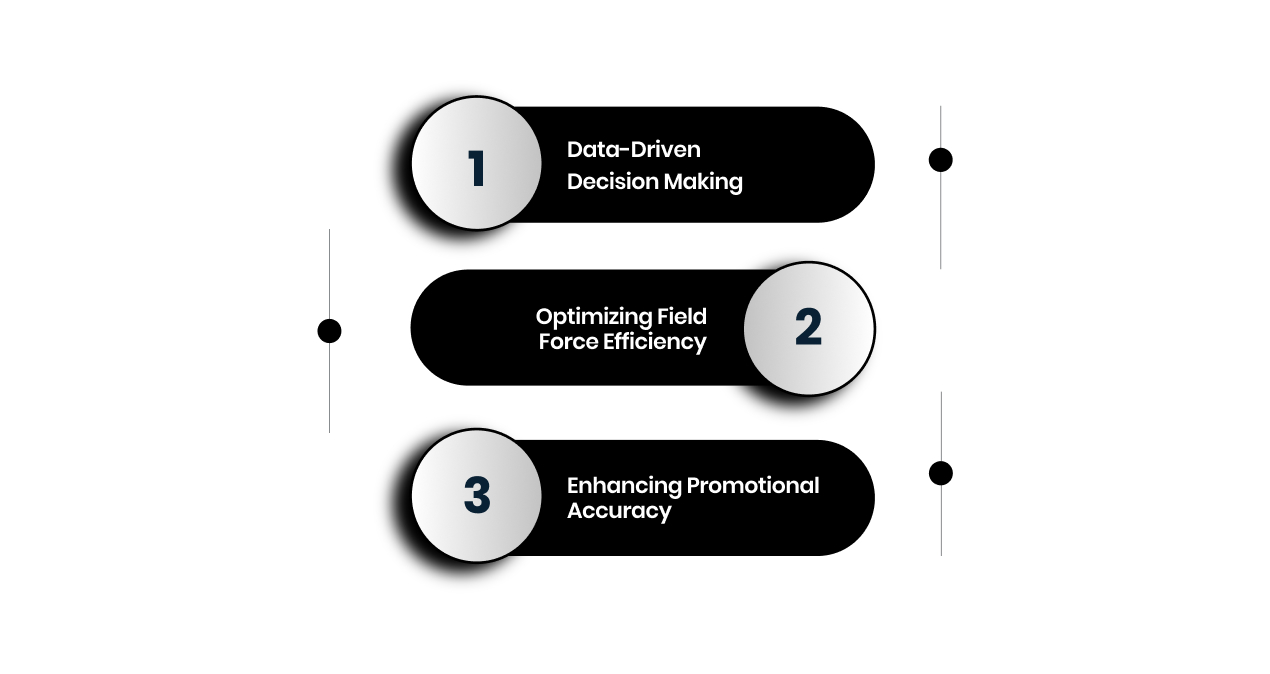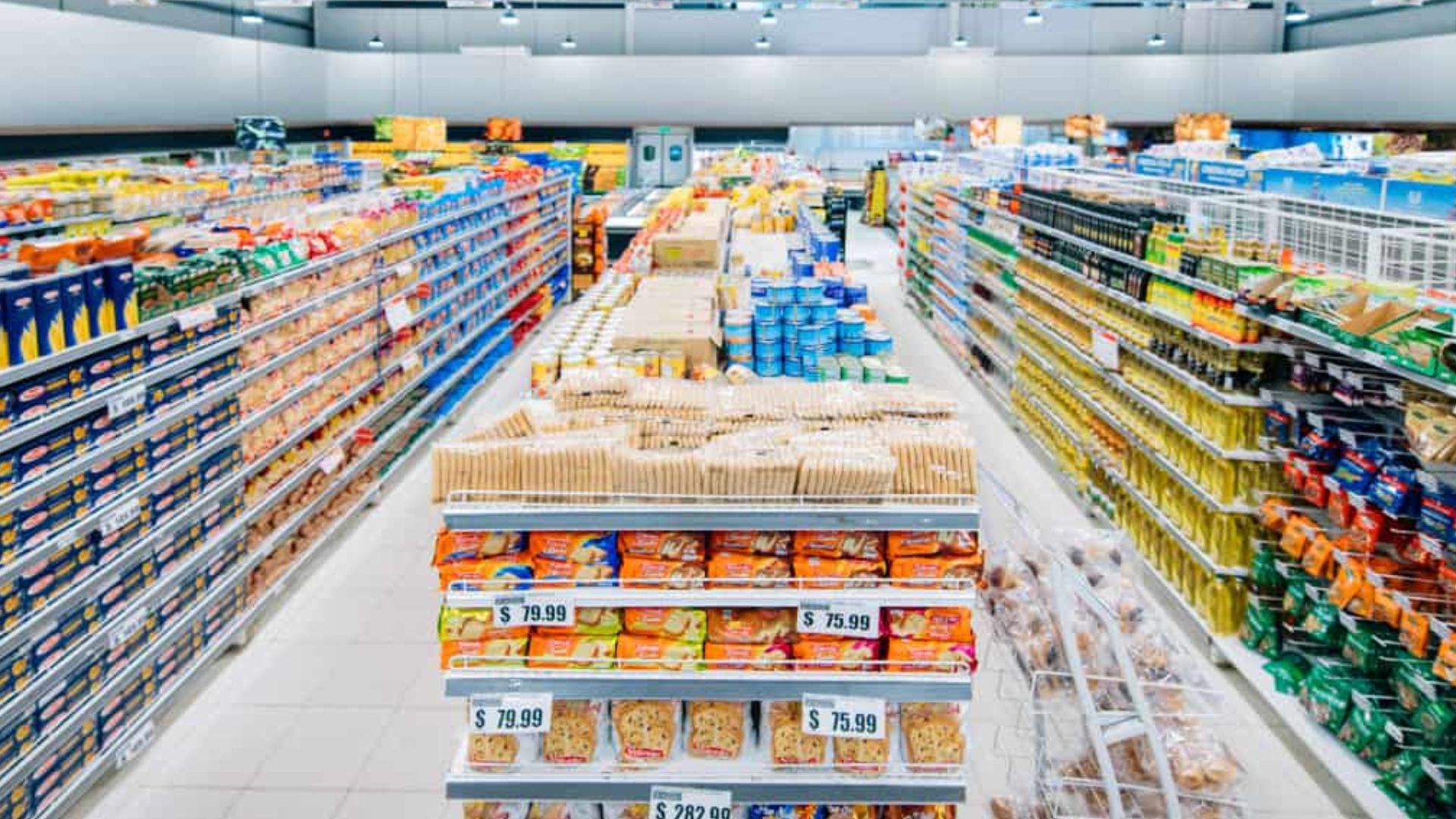The retail pharmacy sector is undergoing a significant transformation, driven by the integration of AI technologies. For CPG brands, pharmacies are not just points of sale—they are key touchpoints that influence product visibility, compliance, and ultimately sales.
With the pharmacy automation market projected to grow from USD 6.99 billion in 2025 to USD 16.65 billion by 2034 at a CAGR of 10.12%, the need for technology adoption is accelerating rapidly. In this evolving landscape, AI is emerging as a powerful tool to enhance store-level execution for CPG brands.
AI empowers teams to monitor product placement, pricing compliance, and promotional adherence efficiently, giving them a clear view of how products perform on shelves. This convergence of healthcare, retail, and CPG demands a rethinking of how brands approach store-level execution, making AI-driven tools essential for staying competitive.
A quick snapshot:
- Transforming Retail Pharmacy with AI: AI in pharmacy gives CPG brands real-time shelf insights, helping them improve store-level execution and make smarter decisions.
- Enhanced Shelf Management: AI ensures accurate stock levels, product placement, and pricing compliance, which boosts visibility and improves promotional outcomes.
- Improved Promotional Accuracy: AI helps ensure every promotion is correctly executed across stores, enhancing campaign effectiveness and a consistent shopper experience.
- Driving Competitive Advantage: AI monitors product performance, shelf adherence, and promotional compliance, enabling data-driven improvements without tracking competitors.
The Evolving Role of Retail Pharmacies for CPG Brands
Retail pharmacies have moved beyond their traditional role as medication dispensers. For CPG brands, these stores are increasingly important for selling packaged healthcare products, wellness items, OTC pharmaceuticals, and personal care goods.
Unlike general supermarkets, pharmacies present unique challenges, such as limited shelf space, strict product placement rules, and high competition within a controlled setting. For example, imagine a vitamin brand ensuring its product is always on the shelf in hundreds of pharmacy outlets; AI can make that oversight possible in real time. Many brands are now using AI to handle these challenges, with 72% reporting reduced operating costs.
For CPG brands, success now relies heavily on visibility and compliance at the shelf level. Ensuring that the right products are in the right locations and aligned with promotional strategies has become a critical differentiator.
Retail pharmacies now serve as small-scale versions of broader retail operations, where AI-enabled insights can drive precision in execution, reduce human error, and support data-driven decisions.
Key Applications of AI in Retail Pharmacy for CPG Brands
Artificial intelligence is reshaping how CPG brands work with retail pharmacies. Instead of only relying on manual store checks, brands now have access to real-time, image-based insights that highlight what’s happening on the shelf.
Here are key applications of AI in Retail Pharmacy for CPG Brands.
1. On-Shelf Stock Monitoring
AI-driven image recognition can automatically detect stock levels on pharmacy shelves. By capturing shelf images in real time, CPG brands can quickly identify missing items or gaps on the shelf.
Field teams can act promptly to correct out-of-stock situations, ensuring top-selling SKUs remain visible and preventing lost sales opportunities. Brands also gain confidence that products are consistently available where customers expect them, which protects shelf share and revenue potential.
2. Planogram Compliance
Pharmacies operate with limited shelf space, making accurate product placement essential. AI helps CPG brands verify whether products are displayed according to the approved planogram.
By spotting misplaced or missing items quickly, brands can correct compliance gaps in real time. This ensures high-value SKUs maintain visibility, strengthen brand consistency across stores, and maximize the effectiveness of in-store promotions.
3. Pricing Accuracy
Accurate pricing on pharmacy shelves is critical for CPG brands. Incorrect pricing can lead to lost sales, missed promotions, and inconsistent customer experiences. AI-driven shelf monitoring captures real-time images, compares prices with set standards, and instantly flags mismatches.
This helps field teams fix pricing issues on the spot, making sure each store matches brand expectations and promotional plans, so brands can correct errors before customers notice, protecting sales and trust.
4. Competitive Intelligence
Retail pharmacies are highly competitive environments, with multiple brands vying for limited space. AI enables CPG brands to track competitor presence at the shelf level, whether it relates to placement or promotional activity.
These insights help sales and marketing teams plan smarter, adjust tactics (like running a promotion or ensuring better placement) to defend market share in key pharmacy channels.
Impact of AI on CPG Brand Strategies in Retail Pharmacies

The integration of AI in retail pharmacies has a direct influence on how CPG brands plan, execute, and measure their in-store strategies.
1. Data-Driven Decision Making
With real-time shelf insights, CPG teams can identify trends in product availability, share of shelf, and promotional compliance. This leads to smarter field resource allocation, targeted actions, and better focus on high-value stores. Brands can react quickly to planogram errors or promotion issues without waiting for manual audit reports.
2. Optimizing Field Force Efficiency
Traditional store audits are time-consuming and prone to human error. AI reduces the time field agents spend manually checking shelves, allowing them to cover more stores each day. This ensures consistent monitoring, quicker fixes, and better productivity across the sales team.
3. Enhancing Promotional Accuracy
Promotional campaigns in pharmacies often fail due to inconsistent execution or placement errors. AI makes sure promotions run accurately across all stores, improving the success of marketing strategies. Brands gain confidence that campaigns are visible, compliant, and executed correctly without heavy manual checks.
By embedding AI into retail pharmacy strategies, CPG brands shift from reactive management to proactive execution. Each shelf-level insight leads to practical actions that strengthen overall brand visibility.
Challenges of AI Integration in Retail Pharmacy for CPG Brands
Despite the benefits, integrating AI into retail pharmacy operations presents several challenges for CPG brands.
- Data Collection and Quality: AI relies on high-quality visual data from stores. Ensuring consistent image capture, handling different lighting conditions, shelf setups, and store layouts can be difficult. Brands must establish clear processes for data collection to guarantee accurate insights.
- Training AI Models: Detecting a wide variety of SKUs, including new or limited-edition products, requires well-trained AI models. Without regular updates and fast training, AI systems may struggle to identify new products, reducing their effectiveness in monitoring shelves.
- Change Management: Adopting AI in retail pharmacies often requires adjustments to current operations. Teams need training on how to capture images correctly, understand insights, and act on recommendations. Resistance to change can slow adoption if not addressed early.
- Integration with Existing Systems: AI insights are valuable only if they can be integrated into existing workflows. CPG brands must ensure that AI tools complement their current retail execution processes without adding unnecessary complexity.
Fortunately, with careful planning and the right AI partners like Paralleldots Shelfwatch platform, these challenges can be effectively managed, as the technology and processes continue to mature.
Future Outlook: AI Reshaping Retail Pharmacy for CPG Brands
The future of retail pharmacies is increasingly intertwined with AI advancements:
- Real-Time Shelf Intelligence: AI systems will provide instant insights, helping brands track thousands of stores at once. This shortens the time between spotting shelf issues and fixing them.
- Rapid Deployment of New SKUs: AI models can be trained to detect new SKUs in a shorter time. This ensures brands can launch products quickly without losing visibility or compliance, helping maintain shelf presence in a competitive environment.
- Scalability Across Markets: AI allows CPG brands to expand monitoring across regions, countries, and different pharmacy formats. With automated shelf data collection, brands can grow their reach while keeping insights consistent.
- Increased Focus on Retail Execution: As AI handles repetitive monitoring tasks, CPG teams can spend more time on strategy, planning, and targeted actions. Brands can use resources to improve planogram compliance and drive promotional success more efficiently.
For CPG brands, embracing AI in retail pharmacies will be essential to stay competitive and meet evolving consumer expectations.
How ParallelDots Empowers CPG Brands in Retail Pharmacies?
ParallelDots provides AI-driven solutions designed specifically to address the challenges CPG brands face in retail pharmacies. By focusing on visual shelf data, ParallelDots enables brands to monitor and act on the key metrics that matter most.
Here’s how we can assist you:
ParallelDots ShelfWatch gives CPG brands instant visibility into pharmacy shelves, capturing data on on-shelf stock availability, share of shelf, planogram compliance, and promotional placement. This ensures that sales leaders and category managers always know how their products are performing at the store level.
2. Ensuring Planogram and Promotional Compliance
In retail pharmacies where shelf space is limited and regulations are strict, ShelfWatch verifies whether products are placed correctly according to the planogram and promotional guidelines. This helps brands close execution gaps quickly, protecting the effectiveness of their campaigns and ensuring consistent visibility across all locations.
3. Actionable insights for field teams
Field agents and sales reps can reduce audit times, cover more stores, and focus on fixing execution errors instead of spending hours collecting data. ParallelDots provides them with actionable insights that can be implemented immediately, driving efficiency and making every store visit more productive.
4. Rapid AI model training with Saarthi
With new SKUs and product variations frequently introduced in pharmacies, ParallelDots’ Saarthi enables AI models to be trained within 48 hours. This means brands can quickly recognise new products with over 95% accuracy, minimising delays in capturing shelf data and ensuring continuous monitoring of updated assortments.
5. Scalable and reliable for global operations
With its ability to analyse millions of images monthly across 50+ markets, ParallelDots offers a scalable solution for CPG brands of any size. Whether targeting local pharmacy chains or global retail networks, ShelfWatch ensures consistent data quality and execution visibility at scale.
By leveraging these tools, CPG brands can enhance their retail pharmacy strategies. To see how it works for your brand, request a demo today.
Frequently Asked Questions
1. How can predictive analytics help CPG brands optimize promotions in retail pharmacies?
Predictive analytics enables CPG brands to identify where promotional execution gaps may occur by analyzing historical shelf data. By understanding which stores consistently comply with promotional planograms, brands can target field efforts effectively, ensuring that discounts and offers are implemented correctly and products are prominently displayed, maximizing visibility and improving in-store promotional success.
2. How does AI-powered image recognition ensure pricing accuracy for CPG products in pharmacies?
AI-powered image recognition captures real-time shelf images, allowing brands to verify that displayed prices match approved planograms. Any deviations in price tags or promotional labels are detected instantly, enabling field teams to correct errors quickly. This ensures consistent pricing across stores, reduces compliance gaps, and maintains accurate on-shelf product representation.
3. What impact does AI have on reducing stockouts of fast-moving CPG products in pharmacies?
AI-powered shelf monitoring tracks on-shelf product availability continuously, highlighting stockouts and low-stock situations as they occur. This real-time visibility allows field teams to respond promptly, restocking shelves before products run out. By reducing stockouts, brands maintain consistent product presence, improve share of shelf, and prevent lost sales in high-demand pharmacy locations.
4. What role does AI play in ensuring regulatory compliance for CPG products in pharmacies?
AI tools monitor planogram compliance and product placement in real time, ensuring that CPG products adhere to regulatory and store-specific guidelines. Any deviations are flagged promptly, helping field teams correct placements. This continuous oversight reduces the risk of non-compliance, ensures accurate product display, and supports audits without relying on manual inspection.


